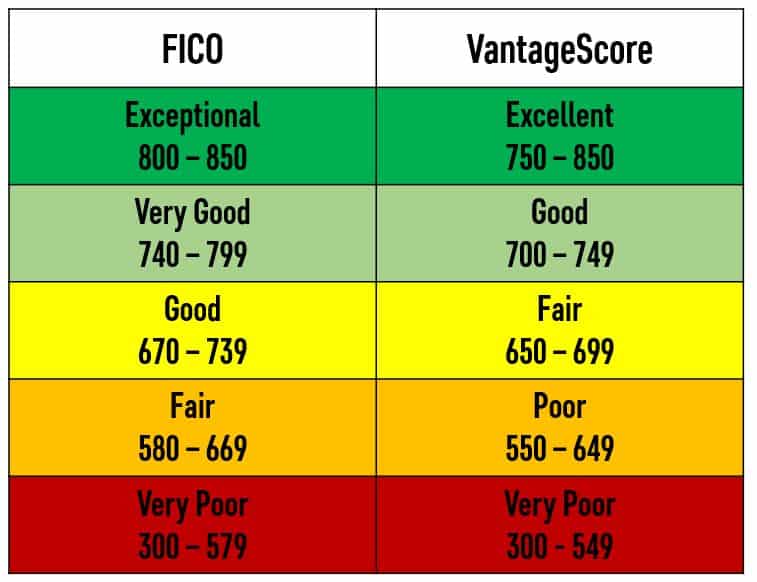Introduction
Credit scores play a significant role in our financial lives. They affect our ability to secure loans, obtain credit cards, and even impact the interest rates we pay. Two of the most well-known credit scoring models are FICO and Vantage Score. In this comprehensive guide, we will delve into the world of credit scoring, exploring the key differences between FICO and Vantage Score, and which one really matters in various financial situations.
What Are FICO and VantageScore?
- FICO Score: The FICO score is a credit scoring model created by the Fair Isaac Corporation. It’s one of the most widely used credit scoring models in the United States and is used by many lenders when making credit decisions. FICO scores range from 300 to 850, with higher scores indicating better creditworthiness.
- VantageScore: VantageScore is a credit scoring model developed by the three major credit bureaus: Equifax, Experian, and TransUnion. VantageScores also range from 300 to 850, and it’s designed to be a competitor to FICO scores. VantageScore has gained popularity and is used by many lenders alongside FICO scores.
Key Differences Between FICO and VantageScore
- Industry Dominance: FICO has been around for much longer and is still considered the industry standard. Many lenders primarily rely on FICO scores for their lending decisions. VantageScore, while growing in popularity, is not as widely used as FICO.
- Scoring Models: FICO and VantageScore use slightly different scoring models. While both use the 300 to 850 range, the factors and weightings used to calculate scores can vary. This means your FICO score may differ from your VantageScore, even if they’re based on the same credit report.
- Credit Report Requirements: FICO and VantageScore require access to the same credit report data, but they may interpret that data differently. This can result in variations in your credit scores.
- Credit History Impact: FICO tends to be more sensitive to a short or limited credit history. VantageScore may offer higher scores to those with limited credit histories, making it potentially more accessible to some consumers.
- Recent Payment History: VantageScore places more emphasis on the most recent two years of your credit history. This can be beneficial if you’ve had a recent positive change in your financial behavior.
- Credit Inquiries: FICO treats all inquiries for a particular type of credit within a specified time (typically 14 days) as a single inquiry, allowing consumers to rate-shop for loans. VantageScore uses a rolling two-week window, potentially impacting your score more if you’re rate-shopping.
Which One Really Matters?
Both FICO and VantageScore can matter, depending on your financial situation. It’s important to recognize that you have multiple credit scores. Not only are there different scoring models, but each credit bureau may also generate its own version of these scores. This can lead to variations in your scores across different models and bureaus.
Here are some scenarios in which one scoring model may matter more than the other:
- Lender Preference: If you’re applying for a specific loan or credit card, it’s essential to know which scoring model that lender uses. Some lenders have a preference for one model over the other.
- Credit Monitoring: If you’re using a credit monitoring service or receiving free credit scores from your credit card company, they might provide either FICO or VantageScore. Understanding which one they use can help you gauge your creditworthiness.
- Rate Shopping: If you’re planning to shop for a mortgage or auto loan, understanding how FICO and VantageScore treat rate shopping can be beneficial. FICO’s approach may be more forgiving when you’re comparing loan offers.
- Credit Goals: Depending on your credit goals, one scoring model may align better with your needs. For example, if you’re building credit, VantageScore’s sensitivity to limited credit histories may be advantageous.
- Monitoring Changes: If you’re actively working on improving your credit, monitoring changes in one particular scoring model can help you track your progress more effectively.
Conclusion
In conclusion, both FICO and Vantage Score matter in various financial situations. While FICO remains the dominant scoring model in the lending industry, Vantage Score has gained traction and is widely used by lenders as well. To make informed credit decisions, it’s essential to understand which scoring model a particular lender uses and monitor your credit reports and scores from both models. By staying informed and recognizing the differences between FICO and Vantage Score, you can navigate the complex world of credit scores and make sound financial choices.
Best regards,
John Terry
Wealth Improved

